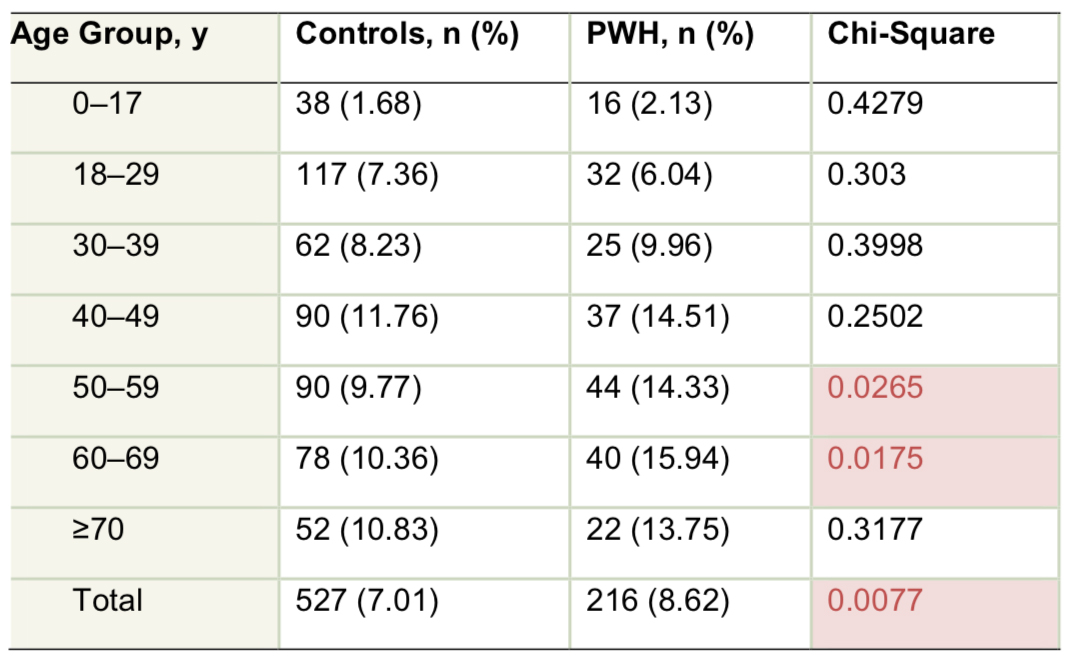Objective:
Prevalence of clinical depression in persons with hemophilia (PWH) has been reported to be from 0%–50%. Most papers studied fairly small numbers of PWH; many had no controls and used instruments not validated for depression. One recent paper, using the Patient Health Questionnaire-9, a validated instrument for depression, reported a prevalence of 37% in 41 adult PWH. Our objective was to determine the prevalence of depression in PWH in the United States.
Methods:
Using the MarketScan® Commercial and Medical Research databases, we compared depression prevalence in 2506 PWH and 7518 controls. Male patients with hemophilia A were identified using an International Classification of Diseases, Ninth Revision, Clinical Modification (ICD-9-CM) code (ICD-9-CM 286.0) and were matched (based on age, eligibility months in the study, region, and health plan type) in a 1:3 ratio with controls (no hemophilia diagnosis). Evidence of depression was determined using ICD-9-CM 296.20– 296.26, 296.30–296.36, and 311 codes. Chi-square tests were used to compare frequencies.
Summary:
PWH had a statistically significant increase in depression prevalence overall and in age groups 50–59 years and 60–69 years and a numerical increase in all other age groups except 18–29 years (Table). The delta between PWH and controls steadily increased between ages 30 and 69 years.
Table. Patients with Major Depressive Disorder

Conclusions:
Commercial claims databases have limitations, including coding errors and inability to verify accuracy of diagnoses. However, in PWH versus a 3:1 control group in a US commercially insured sample that may not be representative of the overall population, depression prevalence was greater in PWH, reaching a peak of 16% in those aged 60–69 years. Awareness of this comorbidity is important as the hemophilia population ages in an era of declining healthcare-delivery resources.

